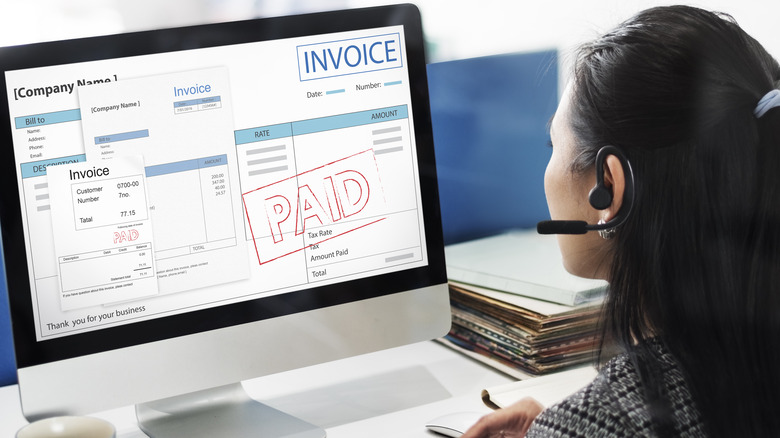What It Really Means To Be Paid In Arrears
As a business large or small there are a few ways in which you can receive payment for a service. Either you can accept payment in advance or choose to be paid in arrears. For advance billing, you can charge and accept those funds before the work has been completed. Whereas, if you were to be paid in arrears, then you would issue an invoice after the work is performed.
In most cases, there would be terms laid out on the invoice, which would state how soon payment should be issued upon receipt of the invoice in question. These terms can be laid out by the business in durations such as due upon receipt, net 30 days, or even net 90 days. This will tell the customer that the invoice will be paid in arrears — or after the job is done — but lays out a timeline in which the bill should be paid. That way, instead of sending an invoice that relies on the customer to decide when to send payment, it allows you to dictate the terms. Let's take a look at some of the reasons businesses could really benefit from being paid in arrears.
Advantages and disadvantages of being paid in arrears
If your company has chosen to have your services be paid in arrears, then there are a few advantages you might find as opposed to adopting a payment-in-advance method. For example, if you've received payment in advance for a job that took more time than you anticipated and thus incurred added expenses, it might prove an awkward situation to have to bill the customer again.
With regard to accepting payment in arrears, however, where you issue an invoice after the job is fulfilled, then you have the benefit of providing an accurate up-to-date bill to the customer — and sending that bill only once. Being paid in arrears also offers your client some sense of trust that you'll be performing the job. Paying in advance before seeing the final results may seem risky to potential customers, especially if it's a larger job that's more expensive.
As for disadvantages to being paid in arrears, the most common would be late payments, but the worst-case scenario would be if the customer decides to never pay the invoice at all. Then you'd be stuck with no funds for the service you provided. To prevent this from happening, you may need to perform a follow-up check with the customer to give a gentle reminder of payments due and to let them know that their account — if left unpaid — will go into arrears.

